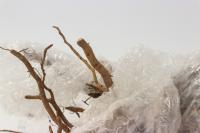1、 Curing method
1. Soil: Vajrayana grows well in loose soil with strong permeability. When preparing soil, you can mix and match the mud in the river, garden soil and a small amount of cinder, so that the air permeability of the soil will be better

2. Light: it likes the growth environment with light. It should see light fully at ordinary times. If it is in summer, it should be raised in a place with relatively weak light. It doesn't like to be exposed to the hot sun, which will be more conducive to its growth
3. It can grow better when the temperature is lower than 22-28 ℃ indoors

4. Moisture: it is drought resistant, so it doesn't need too much watering. During the curing period, the soil should not be too dry. It should have certain moisture and be in a slightly wet state. Pay attention to drainage in rainy season to avoid root rot caused by ponding
2、 Breeding skills
1. Reproduction: in May and June of each year, cut the sub plant from the branches of the mother plant, insert the sub plant into the flower pot, and keep it semi dry with a little water. After a month, the sub plant will take root. Do not water too much to avoid root rot caused by ponding
2. Changing pots: we should change pots in spring, preferably around Qingming Festival. When changing pots, we should replace the old soil, cut off the rotten roots, and then cultivate the plants

3、 Diagnosis and treatment problems
1. Rust: when the plant has rust, rust colored spots will appear on the leaves. It should be placed in a ventilated place and sprayed with enoxazole and ammonium napalm
2. Insect pests: if it is placed in an airless room for a long time, it is very vulnerable to scale insects. We can use a small brush to drive away the insects and use imidacloprid to kill the insects

4、 Other issues
1. Whether it can be eaten or not: the information of King Kong compilation shows that it is toxic, so it is recommended not to eat it. When raising at home, watch your pets and avoid biting plants
2. Whether it can be raised at home: although it can be raised at home, because it is toxic, it should not be raised at home as far as possible, because there will be children at home, so we should pay more attention


 jackfruit
jackfruit snake plant
snake plant hibiscus
hibiscus hydrangea
hydrangea lavender
lavender Green roses climb al...
Green roses climb al... If you don't pay att...
If you don't pay att... Management of four g...
Management of four g...



































